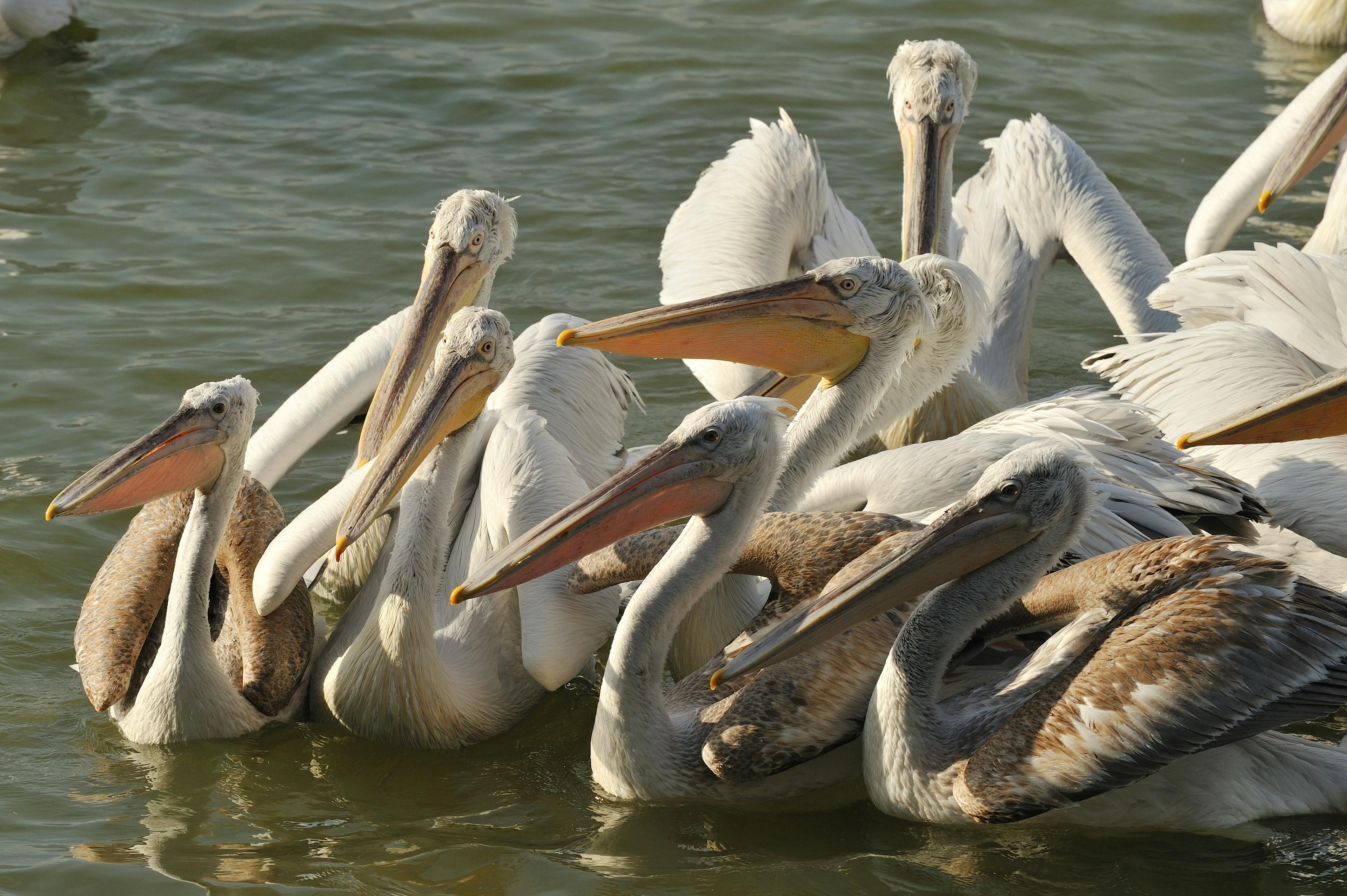Dalmatian pelican




The Dalmatian pelican is one of the largest and heaviest birds capable of flight. It's recognizable by its long beak with a pouch, which it uses to catch fish. Typically, the pouch is yellow, but it turns bright orange during the mating season to impress a mate. Its distinct and luxurious plumage on its head sets it apart from other pelican species.

Maximum 50 years
Wingspan: 3,1 – 3,45 meters
Length: 1,6 – 1,8 meters
13 kilograms
The Dalmatian pelican was widespread across Europe, up until the middle ages. The Dutch marshlands were the perfect spot for these pelicans to fish and breed. However, in the 15th century, hunting of the pelican increased and as the peat marshes were progressively drained, the Dalmatian pelican disappeared from the Netherlands.

Together with numerous conservation organizations, Blijdorp examined whether the Dalmatian pelican could soon return to the Netherlands and Flanders. The research revealed that several areas, such as the IJsselmeer and the Biesbosch, now provide ample fish and nesting sites for the pelican. Since it's unlikely that the Dalmatian pelican will fly here on its own, the possibility of reintroducing them to the wild in this region is being explored. Detailed studies are needed to understand what's involved in reintroducing such a large water bird and the potential impact on Dutch nature.
Dalmatian pelicans often hunt alongside cormorants. When cormorants dive, they frequently drive fish upward. Those fish that swim to the surface are preyed upon by the pelicans, who scoop them up with their large beaks just below the water's surface. In this way, the pelican cleverly takes advantage of the prey that manages to elude the cormorants. However, both cormorants and pelicans have been known to steal a fish from one another; sometimes even right from their beaks!
The Dalmatian pelican is a true water bird, primarily inhabiting marsh and coastal areas. Today, it can be found in Southeast Europe, the Nile Delta in Egypt, and Asia. The Dalmatian pelicans in Asia are migratory. They breed in Kazakhstan, Mongolia, and southern Russia and spend the winter in Iran, Iraq, India, and China. The European population tends to migrate more locally.